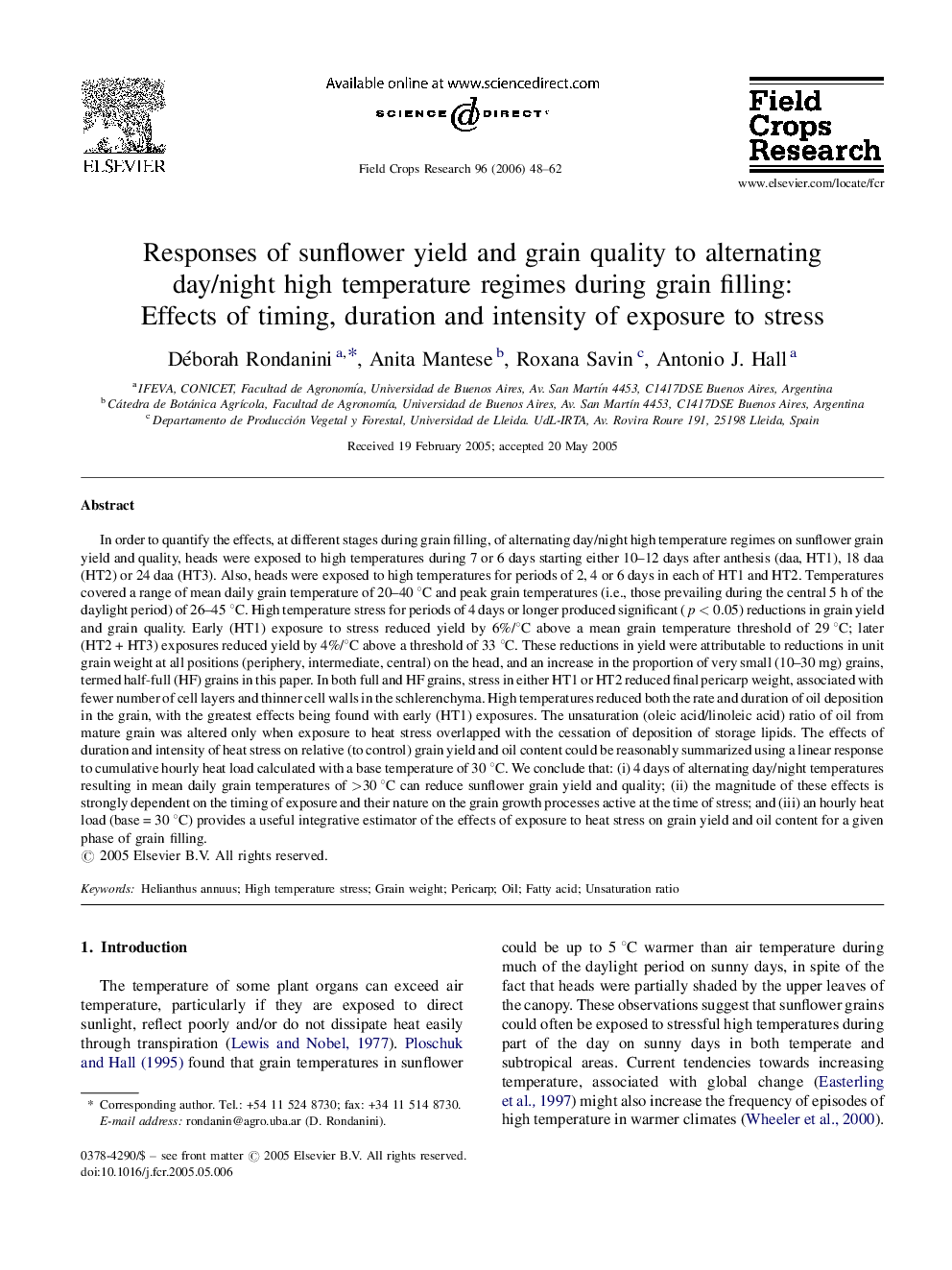| کد مقاله | کد نشریه | سال انتشار | مقاله انگلیسی | نسخه تمام متن |
|---|---|---|---|---|
| 4511889 | 1321940 | 2006 | 15 صفحه PDF | دانلود رایگان |

In order to quantify the effects, at different stages during grain filling, of alternating day/night high temperature regimes on sunflower grain yield and quality, heads were exposed to high temperatures during 7 or 6 days starting either 10–12 days after anthesis (daa, HT1), 18 daa (HT2) or 24 daa (HT3). Also, heads were exposed to high temperatures for periods of 2, 4 or 6 days in each of HT1 and HT2. Temperatures covered a range of mean daily grain temperature of 20–40 °C and peak grain temperatures (i.e., those prevailing during the central 5 h of the daylight period) of 26–45 °C. High temperature stress for periods of 4 days or longer produced significant (p < 0.05) reductions in grain yield and grain quality. Early (HT1) exposure to stress reduced yield by 6%/°C above a mean grain temperature threshold of 29 °C; later (HT2 + HT3) exposures reduced yield by 4%/°C above a threshold of 33 °C. These reductions in yield were attributable to reductions in unit grain weight at all positions (periphery, intermediate, central) on the head, and an increase in the proportion of very small (10–30 mg) grains, termed half-full (HF) grains in this paper. In both full and HF grains, stress in either HT1 or HT2 reduced final pericarp weight, associated with fewer number of cell layers and thinner cell walls in the schlerenchyma. High temperatures reduced both the rate and duration of oil deposition in the grain, with the greatest effects being found with early (HT1) exposures. The unsaturation (oleic acid/linoleic acid) ratio of oil from mature grain was altered only when exposure to heat stress overlapped with the cessation of deposition of storage lipids. The effects of duration and intensity of heat stress on relative (to control) grain yield and oil content could be reasonably summarized using a linear response to cumulative hourly heat load calculated with a base temperature of 30 °C. We conclude that: (i) 4 days of alternating day/night temperatures resulting in mean daily grain temperatures of >30 °C can reduce sunflower grain yield and quality; (ii) the magnitude of these effects is strongly dependent on the timing of exposure and their nature on the grain growth processes active at the time of stress; and (iii) an hourly heat load (base = 30 °C) provides a useful integrative estimator of the effects of exposure to heat stress on grain yield and oil content for a given phase of grain filling.
Journal: Field Crops Research - Volume 96, Issue 1, 15 March 2006, Pages 48–62